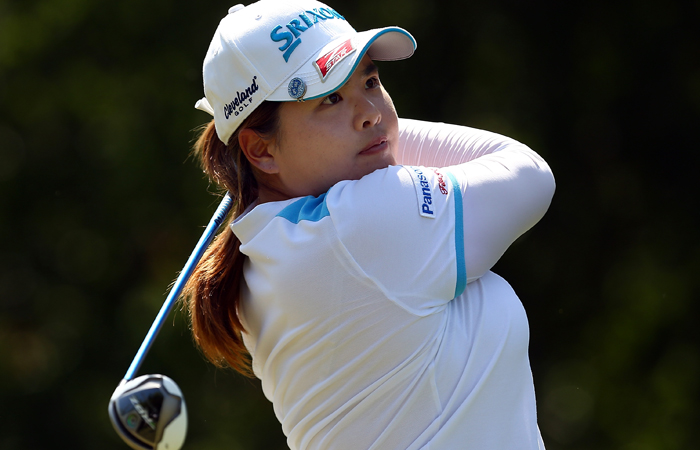When it emerged last week that Alex Salmond, leader of the devolved Scottish parliament, had refused an official invitation to attend the forthcoming Open Championship at Muirfield, the golf-minded media raised a collective eyebrow, shrugged in his general direction and forged ahead with coverage of more pressing matters (to wit: Rory McIlroy’s dalliance with a talking robot).
Salmond, you see, isn’t big box office in the world of golf journalism. And unfortunately, the same can be said of the shibboleth he was attempting to give a vigorous shake: the right of sexist, arguably misogynistic, institutions to project the sport’s message to a wider public. (It’s probably worth noting that I’m under no illusions as to the source of Salmond’s interest in Muirfield: he’s hoping to make a timely impression on a skeptical female electorate. It’s politics, baby!)
The Honourable Company of Edinburgh Golfers, the group responsible for maintaining the links at Muirfield, has thus far proven steadfast in its refusal to countenance the possibility of female membership.
Like the blazered relics who pooter about the links at Troon and Royal St. George’s – the other courses on the Open rota content to inhabit a geriatric pastiche of Victorian England – the men of Muirfield have spent the best part of the last century retreating into a past largely of their own creation.
Once upon a time, they expressed their ideology with authority, believing themselves firmly on the right side of history. Now, several decades and one seismic shift later, their pleas for privacy struggle to mask a soul-shaking fear of the unknown. The future isn’t what the blazers expected, and by increments, the writing has been scrawled on the wall. The end – heralded by a mountainous bonfire of bras and plague of promiscuous women, presumably – is most definitely nigh.
It’s only a matter of time before Muirfield puts one token female in front of the other and steps headlong into the 21st century.
Country club sexism of the “boys only; girls smell” variety is quite literally dying out, then. But it threatens to leave in its place an altogether more subtle and enduring form of prejudice; a tyranny of minor injustices and scattershot half-truths that, if we’re not careful, will mar the face of golf for decades to come. Think of it as the kind of sexism that deploys vocal support of female empowerment as the most insincere of come-ons.
You can see it already, in the ambivalent treatment afforded Salmond’s announcement by the media at-large. (By way of thought experiment, imagine the firestorm that would have ensued had the Scottish nationalist indicted not Muirfield’s membership policy but the European and PGA tours’ decision not to sanction Sergio Garcia for issuing an “inappropriate” dinner invitation to Tiger Woods.)
It’s there, too, in the shape and tenor of the coverage afforded women’s golf, both in print and online.
Today’s patronizing lament of the fact that neither Inbee Park nor Yani Tseng is “charismatic” enough to strike a chord with the general public is tomorrow’s bikini slideshow of the LPGA’s most “glamorous” players. Suggestions that run against the grain of received sexism – that the popularity of sportswomen needn’t hinge solely on their ability to titillate a middle-aged male audience, or that responsibility for altering the current status quo shouldn’t lie exclusively with female golfers themselves – don’t even warrant a place in the discussion.
Broadly speaking, the LPGA faces the same dilemma that has divided feminists for decades. Is it better to work with the immediate circumstances you’ve been dealt or channel all that pent-up, righteous indignation towards the pursuit of a more audacious goal?
Golf’s powers that be, however, whether they reside in royal and ancient ivory towers or one of publishing’s numerous glass houses, have done their best to render the outcome a fait accompli. The result is a women’s game caught in the no-man’s land between two promotional strategies – one emphasising empowerment, the other respectful of what I like to call the “perv surge” in ratings.
In many ways, the lack of interest in Salmond’s most recent bit of populist grandstanding is depressing precisely because it failed so dramatically.
Is the game too far gone, too committed to a path of soft, paternal discrimination, to see the massive inequity lying in plain view? Are we too naive to recognize that the broader disinterest, from those unfamiliar with the game, is not the same as our own? Theirs can be traced to golf’s long and storied history of discrimination, wherein aberrations like Muirfield are just part of the deal. Ours, by contrast, is due to little more than complacency and a smug faith in the status quo.
Though significant, Augusta National’s admission of Condoleeza Rice and Darla Moore didn’t solve sexism; it just created an opportunity. The next time the (overwhelmingly male) stewards of the game, media reps and officials alike, are left to stew over a report detailing the game’s underperformance with young women, they’d do well to bear that little statement of the obvious in mind.
Related Links: Same Old Non-Story: Women’s Golf and the Struggle for Parity
Other Hot Links:
– The Odds: Tiger Woods Remains Big Favorite at Muirfield
– Tiger Woods Says Elbow Will Be ‘Good Enough’ For British Open
– Back9Network Mid-Season Golf Awards
– The Baddest Bunker In Golf
– Golf Fireworks: 9 Explosive Fights & Tantrums






